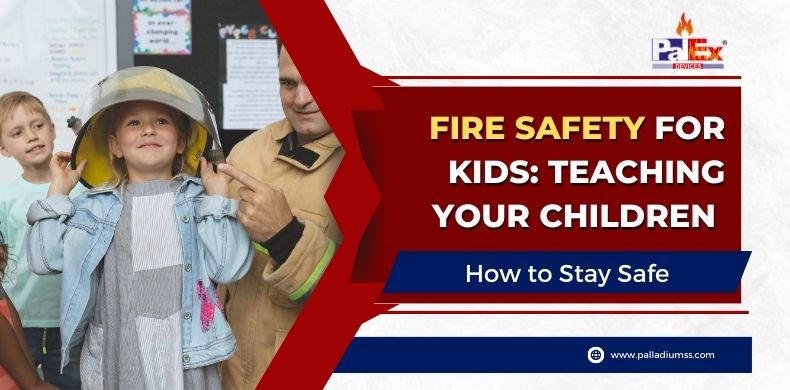- Start With the Basics: Educate kids on fire, its composition, and its mechanisms of operation. Elaborate that fire can rapidly propagate and harm individuals and assets. Instruct them on distinguishing between fire and other heat sources, including stoves, ovens, candles, and lamps.
- Demonstrate Fire Safety Equipment: It would be beneficial to illustrate to youngsters the various kinds of fire safety instruments, including smoke detectors, fire alarm panels, firefighting devices, and fireproof covers. Educate them on the appropriate usage and application of said tools. It is essential to identify the location of smoke detectors in your residence and conduct routine functionality checks.
- Role-Play Fire Scenarios: Practice what to do in a fire emergency with your children. Walk them through what to do if they hear the smoke alarm and how to evacuate safely. Practice escaping from each room of the house, and identify at least two exit routes for each room.
- Discuss Fire Hazards: Talk to your children about fire hazards in the home, such as overloaded electrical outlets, leaving the stove on, and leaving flammable materials near heat sources. Encourage them to notify you if they notice anything dangerous.
- Teach kids to Stop, Drop, and Roll: Explain that they should stop if their clothing catches fire. Drop to the ground. Roll back and forth until the flames are out.
- Revisit and Practice Regularly: Talking and implementing fire safety measures with children is essential. It is important to periodically examine fire safety procedures monthly and communicate any modifications or revisions to the fire safety plan as necessary.
- Stress the Importance of Staying Low: In a fire emergency, teach kids to stay low to the ground and crawl to escape. This can help reduce their exposure to smoke and heat.
- Discuss Smoke Alarms: Teach kids about smoke alarms and how they work. Ensure to demonstrate how to test and replace batteries in smoke alarms and remind them to notify you if the smoke alarm ever goes off.
ABOUT | CONTACT | CAREER | BLOG | For sales & dealership enquiries  +91-99718-90006
+91-99718-90006


